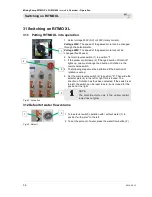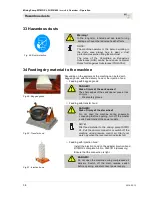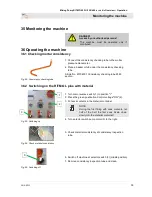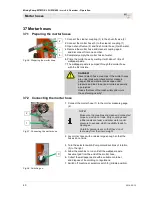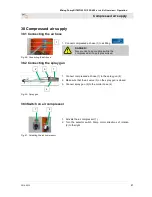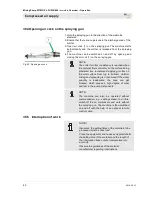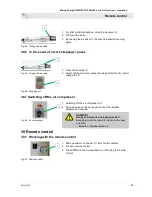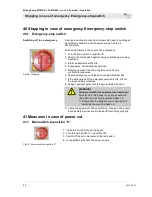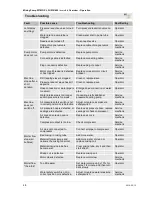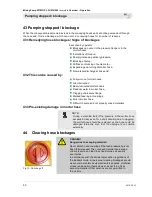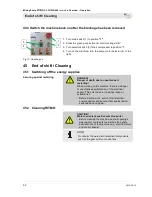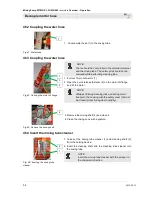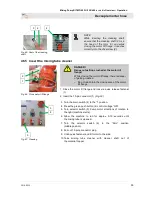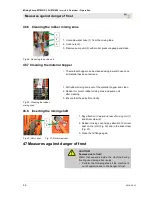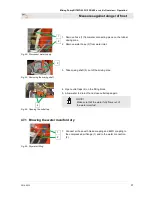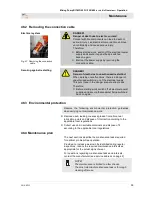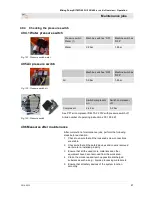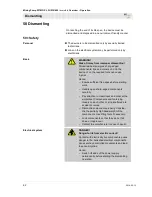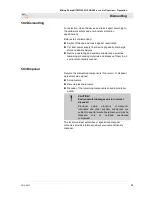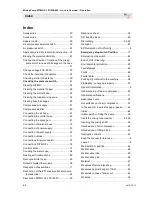
Mixing Pump RITMO XL FU 230/400 reversible Overview – Operation
Pumping stopped / blockage
50
2019-05-13
43 Pumping stopped / blockage
When the conveyed material remains stuck in the conveying hoses and cannot be pumped out through
the hose end, this is a blockage, which can occur in conveying hoses for a number of reasons.
43.1 Remedying hose blockages / Signs of blockages
Execution by operator:
Blockages can occur in the pressure flange or in the
mortar hoses.
Indications of this are:
Sharply increasing delivery pressure,
Blocking of pump,
Stiffness or blocking of pump motor,
Expanding and turning of mortar hose,
No material discharge at hose end.
43.2 This can be caused by:
Fully worn out mortar hoses,
Job interruption
Badly lubricated mortar hoses,
Residual water in mortar hose,
Clogging of pressure flange,
Marked tapering at couplings,
Kink in mortar hose,
Difficult to pump and not properly mixed materials.
43.3 Pre-existing damage in mortar hose
NOTE:
During a machine fault, if the pressure in the mortar hose
exceeds 60 bar even for a short duration due to clogging,
the mortar hose should be replaced, as the hose could be
damaged internally such that the damage is not visible
externally.
44 Clearing hose blockages
Fig. 73: Switching off
DANGER!
Danger due to escaping material!
Never detach hose couplings if the feed pressure has not
been fully released! The conveyed material can escape
under pressure and lead to serious injuries, especially
eye injuries.
In accordance with the accident prevention regulations of
the Builder’s Guild, all personnel clearing blockages should
wear personal safety equipment (safety goggles, protective
gloves) and position themselves so as not to be hit by
escaping material. Other persons are not permitted in
the vicinity.

